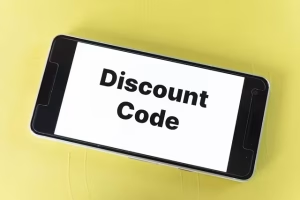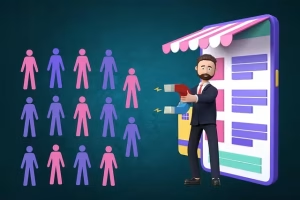Recent industry analysis indicates that nearly three-quarters of generic digital marketing campaigns fail to meet their expected return on investment. This is not a failure of the marketing channels themselves but a symptom of a much larger shift in consumer behavior. The modern customer is surrounded by a constant stream of digital noise, and as a result, has become exceptionally skilled at ignoring messages that are not directly relevant to their immediate needs or interests. The one-size-fits-all approach to e-commerce, a strategy that once built empires, is now a liability.
The strategic solution to this challenge is a concept known as hyper-personalization. It represents a fundamental shift away from broad demographic targeting and toward treating each customer as a unique “market of one.” By leveraging real-time data and artificial intelligence, businesses can now create shopping experiences so finely tuned to an individual that they feel less like marketing and more like a helpful, intuitive service.
This article will not only showcase powerful examples of hyper-personalization in e-commerce but will also provide a strategic framework for its implementation. We will explore everything from data collection to AI-driven execution, all while focusing on the measurable business outcomes that truly matter.
Defining the Terms: Personalization vs. Hyper-Personalization

Before we explore specific examples, it is critical to understand a key distinction. The terms “personalization” and “hyper-personalization” are often used interchangeably, but they represent different levels of strategic depth and technological capability. Understanding this difference is the first step toward implementing a more effective customer experience strategy.
What is Standard Personalization?
Standard personalization is the use of basic customer data to add a layer of relevance to marketing and website content. It is the first step up from completely generic communication. This often involves using a customer’s name, their past purchase history, or basic demographic information.
For example, when you receive an email that says, “Hello, John! Here are more blue shirts,” that is personalization. The system knows your name and knows you previously bought a blue shirt. It is a good first step and is better than an email that simply says, “Check out our new shirts.” However, it is based on past actions and limited data points.
What is Hyper-Personalization?
Hyper-personalization goes much deeper. It leverages real-time behavioral data, artificial intelligence (AI), and predictive analytics to not just react to what a customer has done, but to anticipate what they will want or need next. It considers context, such as the customer’s current location, the time of day, their recent browsing activity across multiple sessions, and even external factors like the local weather.
To continue our analogy, a hyper-personalized email might say: “Hello, John. We see you’re browsing from Boston where it’s forecasted to rain this weekend. Here are our top-rated waterproof jackets, which our system shows pair well with the running shoes you were looking at last Tuesday.”
This message is more powerful because it uses multiple data points:
- The customer’s name (John).
- His current location (Boston).
- Real-time external data (the weather forecast).
- Recent browsing history (waterproof jackets).
- Past browsing history (running shoes from a previous session).
The best way to think about the difference is with a simple analogy. Personalization is like a party host who greets you by name. Hyper-personalization is like a host who not only knows your name but also remembers your last conversation, knows your favorite drink, and introduces you to another guest who shares your passion for sailing. One is polite; the other creates a memorable and valuable experience.
11 Actionable Examples of Hyper-Personalization in E-Commerce
Theory is important, but seeing these strategies in action is where the true value becomes clear. Here are eleven real-world examples of how leading e-commerce businesses are using hyper-personalization to drive growth and build lasting customer relationships.
1. AI-Driven Product Recommendations

This is perhaps the most well-known form of personalization, but its hyper-personalized form is far more advanced. E-commerce giant Amazon is a master of this. Its recommendation engine does not just suggest items based on the simple logic of “customers who bought this also bought…” Instead, its AI analyzes a huge collection of data. It looks at your individual purchase history, what you’ve put in your cart but not bought, items you have clicked on, and how long you looked at them. It then compares your pattern of behavior to millions of other shoppers to find “taste clusters.”
The result is a recommendation engine that feels predictive. It might suggest a specific brand of coffee because you bought a certain type of coffee maker six months ago and its data predicts you might be running low. This is not just cross-selling; it is anticipating a need before the customer has even fully realized it themselves, leading to higher sales and a feeling of being understood.
2. Dynamic Website Content and User Experience (UX)

Imagine if a store could physically rearrange its aisles for every single customer who walked in. That is what dynamic websites do in the digital world. Companies like Nike use this strategy effectively. When you visit their website, the content you see is not the same as what another person sees. You have probably noticed this if you have searched for something online and then get ads related to your searches in other channels.
If your browsing history shows a strong interest in running shoes and marathon apparel, your homepage will be filled with images of runners, new running shoe releases, and articles about training. If another user primarily shops for basketball gear, their homepage will feature basketball players, the latest Air Jordans, and promotions related to the NBA season. This extends beyond the homepage to navigation menus and promotional banners. This tailored experience makes it easier for customers to find what they want, reducing friction and significantly increasing the likelihood of a purchase.
3. Personalized Search Results
A website’s search bar is one of the most important tools for a customer. Hyper-personalization makes it even smarter. Typically, a search for a term like “shirts” will show the most popular or highest-margin products first. With personalization, the search results are re-ranked for each individual user.
If you have previously purchased items from a specific brand, say “Patagonia,” that brand’s shirts will appear higher in your search results. If you have shown a preference for organic cotton materials or a specific price range, the search algorithm will prioritize those items for you. This saves the customer time and frustration, delivering them directly to the products they are most likely to buy. It turns the search bar from a simple tool into a personal shopping assistant.
4. Behavior-Triggered Communications
Most e-commerce stores have a basic cart abandonment email. Hyper-personalization takes this concept much further. Using marketing automation tools like Klayvio or HubSpot, stores can send highly specific messages based on a wide range of behaviors.
- Browse Abandonment: If a customer spends several minutes looking at a specific product page but does not add it to their cart, they might receive an email an hour later. The email might say, “Still thinking it over? Here are the key features of the product you viewed,” and perhaps include customer reviews to build confidence.
- Category Interest: A customer who has been browsing hiking boots but has not bought anything might receive an article titled “How to Choose the Perfect Hiking Boot” a few days later. This provides value without being an aggressive sales pitch.
- Predicted Churn Risk: An AI can identify customers whose buying frequency has dropped.16 A special, personalized offer can be automatically sent to re-engage them before they are lost for good.
5. Geolocation-Based Offers

Knowing where a customer is located in real-time opens up many personalization opportunities. A large retailer with both an online store and physical locations can use a customer’s phone location (with their permission) to blend the digital and physical experience.
For example, if a customer is browsing a product on their mobile app and then walks near a physical store location, they could receive a push notification. The notification might say, “The item in your cart is in stock at our store just around the corner. Stop by and get 10% off your purchase today.” This is a powerful way to drive foot traffic and provide immediate gratification. This strategy also works for promoting weather-specific items, like offering a discount on umbrellas to users in a city where it has just started raining.
6. AI-Powered Chatbots and Shopping Assistants
Modern chatbots are no longer simple question-and-answer machines. When integrated with a customer’s data, they become powerful personal shoppers. A hyper-personalized chatbot on a fashion website would greet a returning customer by name. It could then say something like, “Welcome back! Are you looking for something to go with the black dress you bought last month? I can suggest some shoes that would pair perfectly.”
This chatbot can access the customer’s size preferences, past purchases, and even style affinities based on what they have previously browsed. It can guide them through the shopping process, answer complex questions, and provide a level of service that was once only available from a human sales associate.
7. Curated Subscription Boxes

The subscription box model, perfected by companies like Stitch Fix, is built entirely on hyper-personalization. Customers fill out an extensive style quiz, providing what is known as “zero-party data”—information they willingly and proactively share. Stitch Fix’s AI then analyzes this data along with feedback from past boxes, and even looks at a customer’s Pinterest boards for inspiration.
This combination of human stylists and powerful AI results in a highly curated box of clothing sent directly to the customer. The service learns and adapts over time, getting better with each box. It is the ultimate example of moving beyond selling products to selling a personalized experience and service.
8. Tiered and Personalized Loyalty Programs
Everyone appreciates being rewarded for their loyalty, but generic rewards can feel impersonal. Sephora’s Beauty Insider program is a prime example of personalization done right. The program does not just reward customers based on how much they spend. It analyzes what they buy.
A customer who primarily buys skincare products will receive sample offers and promotions for new moisturizers and serums. A customer who focuses on makeup will receive offers related to new foundations or eyeshadow palettes. This ensures that the rewards are genuinely valuable and relevant to the individual, making the loyalty program feel less like a marketing gimmick and more like a true perk of being a valued customer.
9. Contextual Push Notifications
Push notifications can be annoying if they are generic. But when they are hyper-personalized, they can be incredibly effective. A contextual push notification is sent based on a user’s specific situation or behavior.
For example, an airline app might send a notification a few hours before your flight with the gate number and a map of the airport. A retail app might notice you have added an item to your wishlist and send a notification a week later when that specific item goes on sale. These notifications are helpful and timely, which increases user engagement with the app instead of leading them to turn off notifications altogether.
10. Dynamic Pricing (A Cautionary Example)

Dynamic pricing is one of the most advanced and powerful forms of hyper-personalization, but it must be used with extreme care. This strategy involves showing different prices to different customers for the same product based on data. This data could include their past spending habits, their location, or the device they are using.
Airlines and ride-sharing services use this openly, with prices changing based on real-time demand. In e-commerce, however, it can be seen as unfair if not handled transparently. If a loyal customer discovers they are paying more for a product than a new customer, it can destroy trust. While technically powerful, this strategy should be approached with a strong ethical framework and a focus on providing value, such as offering exclusive discounts to loyal customers rather than charging new customers less.
11. Post-Purchase Hyper-Personalization
The customer relationship does not end when the purchase is complete. The post-purchase phase is a golden opportunity for hyper-personalization. Instead of sending a generic “Thank you for your order” email, a company can send a highly tailored follow-up.
If a customer buys a complex piece of electronic equipment, the follow-up email could contain a link to a personalized setup guide or a video tutorial for the exact model they purchased. If someone buys a new tent, the follow-up could include a list of top-rated campsites in their area or a guide on how to properly care for the tent’s fabric. This shows the customer that you care about their experience with the product, which helps build long-term brand loyalty.
The Technology Stack Behind Hyper-Personalization
This level of personalization does not happen by magic. It requires a carefully constructed technology stack, where each component plays a vital role in collecting, analyzing, and acting on customer data.
The Fuel: Data Collection
First and foremost, you need data. The quality and type of data you collect will determine the effectiveness of your strategy.
- Zero-Party Data: This is data that customers intentionally share with you. This includes information from quizzes, surveys, and account preference centers. It is highly valuable because it is explicit and accurate.
- First-Party Data: This is data you collect directly from a user’s interactions with your business. This includes on-site behavior (which pages they visit, how long they stay), their purchase history, and any information in your Customer Relationship Management (CRM) system.
- Third-Party Data: This is data collected by an outside source that you can purchase or use. It often includes broad demographic or interest-based information. However, due to growing privacy concerns and regulations, reliance on third-party data is becoming less common and riskier.
The Engine: Core Technologies
Once you have the data, you need the right engine to process it and put it to use.
- Customer Data Platforms (CDP): A CDP is like a central brain for all your customer data. It pulls in information from your website, your mobile app, your email marketing tool, and your physical stores, and combines it into a single, unified profile for each customer. This complete view is essential for true hyper-personalization.
- Artificial Intelligence (AI) and Machine Learning (ML): AI and ML are the tools that find patterns in the data. They can predict which products a customer is most likely to buy, identify customers who are at risk of leaving, and determine the perfect time to send a marketing message.
- E-commerce Platforms: Your e-commerce platform is the foundation. Platforms like WooCommerce are highly flexible and can be extended with plugins and integrations that connect to CDPs and AI tools, allowing you to implement these strategies directly within your store.
- Marketing Automation Suites: These are the tools that carry out the actions. Once your AI has decided what message to send to which customer at what time, a marketing automation tool is what actually sends the email, push notification, or SMS.
The Business Imperative: Quantifying the Return on Investment (ROI)
Implementing a hyper-personalization strategy requires an investment of time and resources. Therefore, it is essential to understand the clear business benefits. This is not just about making customers feel good; it is about driving tangible, measurable results.
- Increased Conversion Rates: When customers are shown products and offers that are highly relevant to their needs, they are far more likely to make a purchase.
- Higher Average Order Value (AOV): By using AI to offer intelligent and relevant product recommendations, you can effectively cross-sell and up-sell to customers, increasing the amount they spend in a single transaction.
- Enhanced Customer Lifetime Value (CLV): CLV is a measure of the total profit a business can expect from a single customer over the entire course of their relationship. By building loyalty through personalized experiences, customers are more likely to make repeat purchases over a longer period, dramatically increasing their CLV.
- Reduced Cart Abandonment: Personalized and timely interventions, such as a helpful chatbot pop-up or a browse abandonment email, can address customer questions or concerns and bring them back to complete their purchase.
- Improved Customer Loyalty and Brand Affinity: Ultimately, customers are loyal to brands that make them feel seen and understood. Hyper-personalization is one of the most powerful tools for building this emotional connection at scale.
Navigating the Challenges and Ethical Lines

While the benefits are clear, the path to hyper-personalization is not without its challenges and potential pitfalls. A successful strategy requires a thoughtful approach that prioritizes customer trust above all else.
The “Creepiness” Factor
There is a fine line between a helpful, personalized experience and an invasive one that feels “creepy.” The key to staying on the right side of this line is a combination of transparency and value. Customers are generally willing to share their data if they understand how it will be used and if they receive a clear benefit in return, such as better recommendations or exclusive offers. If the use of data feels hidden or provides no real value to them, it will quickly erode trust.
Data Privacy and Compliance
In today’s world, data privacy is not optional. Regulations like the General Data Protection Regulation (GDPR) in Europe and the California Consumer Privacy Act (CCPA) give customers significant rights over their personal data. Businesses must be transparent about what data they collect and give customers easy ways to manage their preferences and opt out. A personalization strategy built on a foundation of respect for user privacy is the only sustainable path forward.
Implementation Complexity and Cost
Building a full hyper-personalization stack is a significant undertaking. It requires the right technology, the right data infrastructure, and skilled people to manage it. For smaller businesses, it is often best to start small. Begin with a single strategy, like advanced email segmentation or a product recommendation plugin, and build from there as you see results.
Conclusion: Hyper-Personalization is a Journey, Not a Destination
Hyper-personalization is not a single project that you complete and check off a list. It is a fundamental, ongoing shift in how you approach your relationship with your customers. It requires moving from a mindset of selling to people to one of building adaptive, helpful, and valuable experiences for them.
The journey begins with a commitment to understanding your customers on a deeper level. It requires a dedication to collecting and unifying your data, investing in the right technologies, and always prioritizing customer trust and privacy. The examples we have explored show what is possible when data and technology are used not just to sell products, but to build relationships. Your first step does not have to be complex. Begin by analyzing the customer data you already have. The insights you need to start your personalization journey are likely already there, waiting to be discovered.







